23 Sep DAY 01: Singapore / Madrid
Landed at Zurich, Switzerland for transit to Madrid, Spain.
On-board bus for transit from Zurich, Switzerland to Madrid, Spain by Swissair. About 2-hour flight.
24 Sep DAY 02: Madrid
Madrid, Capital of Spain
Outside Adolfo Suarez Madrid-Barajas International Airport, Spain. Walking to the coach about 100 metres away. Prior to 2014, it was simply called Madrid-Barajas International Airport. It is located on the northeast of Madrid, Barajas District, only 12 kilometres from Madrid city centre.
Arrived at Basilica Pontificia de San Miguel or The Pontifical Basilica of St Michael, a baroque Roman Catholic church and minor basilica in central Madrid, Spain. It is located in San Justo Street, adjacent to the Archbishop's Palace; and was completed in 1745.
It is the church of the Apostolic Nunciature to the Kingdom of Spain of the Holy See, and is now administered by the priests of Opus Dei ( Latin for "Work of God', a teaching institution ).
We had our first Mass celebrated by Spiritual Director, Father Francis John Leong of this pilgrimage.
Lunch was just around the corner of the church.
I paid 5 euros for a glass of beer here. Elsewhere into our pilgrimage, I got it as cheap as 1.60 euros. One euro was equivalent to S$1.60. Everyone had to buy something, and keep the receipt for entering the toilets.
Dinner was nearby too. We proceeded to the hotel after the dinner.
25 Sep DAY 03: Madrid / Avila / Salamanca

This was the first and best breakfast throughout our pilgrimage. The worst was during our 3-day stayover at Lourdes in the southern part of France.
This World Heritage city is adored for its formidable medieval walls fortifying around the old city. The city was developed as such after this part of Spain had been re-conquered from the Moors to stand as a bastion against the Caliphate to the south. The walls, gates ( 11 ), turrets ( 97 ) and merlons ( 2,500 ) are part of the sophisticated defence strategy for the city. The walls have a perimeter of 2.5 kilometres, and are never less than three metres in thickness. They date as far back as the 1100s and 1200s. Pilgrims flock to Avila for historical glimpses of St Teresa of Avila, also called St Teresa of Jesus ( 28 March 1515 - 4 October 1582 ).
Some models of the fortified city on display.
Within the city itself, there are defences against attacks.
Convent of St. Teresa
Main destination for Catholic pilgrims to Avila. Built in the 17th century after the canonization of St. Teresa over the house where she was born. It contains her relics, along with those of her friend St. John of the Cross, in a museum.
St Teresa was a prominent Spanish Carmelite nun, author, theologian of contemplative life through mental prayer. When St Teresa was eleven years old, her mother died, leaving her grief-stricken. This prompted her to embrace a deeper devotion to the Virgin Mary as her spiritual mother. She was sent for her education to the Augustinian nuns at Avila.
We celebrated Mass within the church.
Lunch time.
Salamanca
On our way to Salamanca. Salamanca, in northwestern Spain, is the capital of Salamanca province, part of the Castile and León region. With a history dating back to the Celtic era, it’s known for its ornate sandstone architecture and for the Universidad de Salamanca.
Founded in the 1100s, and a key intellectual centre in the 15th-16th centuries, the university continues to add to the city’s vibrancy with its international student population.
Plaza Mayor
The Plaza Mayor of Salamanca, built as a result of a solemn decision by King Philip V in 1710, is a unique artistic achievement in Baroque art, and considered by many as the heart of the Golden City (La Dorada). Begun in 1729 according to plans drawn by Alberto de Churriguera, and finished in 1755 by Andrés García de Quiñones, and with contributions from Nicolás de Churriguera and José de Lara de Churriguera, it is one of the most important urban ensembles of 18th century Europe.
12th Century Old and New Cathedral
The old cathedral is one of the two cathedrals in Salamanda. The other is the new cathedral. Both are joined together. It was founded by Bishop Jerome of Perigord, in the 12th century, and completed in Romanesque/Gothic style in the 14th century. It is dedicated to Santa Maria de la Sede ( Saint Mary of the See ).
There are 53 tableaux, 12 of which were completed by the 15th-century Italian artist Dello Delli, depicting the life of Jesus and the Virgin Mary. A fresco of the Final Judgement. Such a method of painting was used in Roman times, and by great masters of the Italian Renaissance including Giotto, Raphael and Michelangelo. The painting was done rapidly in watercolour on wet plaster on a wall or ceiling, so that the colours could penetrate the plasters, and stay on as it dried.
University of Salamanca
The ancient university town north-west of Madrid was first conquered by the Carthaginians in the 3rd century B.C. It then became a Roman settlement before being ruled by the Moors until the 11th century.
Officially established in 1218 by the royal decree from King Alfonso IX, the University of Salamanca was Spain's first institution of higher learning.
By 1254 it had received acknowledgment from Pope Alexander IV as one of the four great world universities, along with the universities of Oxford, Paris and Bologna.
By 1254 it had received acknowledgment from Pope Alexander IV as one of the four great world universities, along with the universities of Oxford, Paris and Bologna.
The university was actually founded in 1134, and teaching at the site dated back to at 1130. It is located 120 miles west of Madrid.
26 Sep DAY 04: Salamanca / Santarem / Fatima
Moving out to Santarem for our daily Mass. We began each day by praying the 6-decade Rosary recommended by Spiritual Director. The 6th decade was dedicated to the Immaculate Conception. Next, we did Prayer of the Morning from the Magnificat.
Breaks along the way for toilet facilities, and a quick drink or bite here and there at major petrol stations.
Santarem ( Portugal )
Santarem ( Portugal )
Shrine of 13th century Eucharictic Miracle
The miracle involved a woman and her unfaithful husband. In her desperate attempt to save her marriage, she went to see a sorceress for help. As part of the agreement, she was to bring the sorceress a consecrated Host.
Reluctantly, the woman committed the sacrilege. At the Church of St Stephen, she received the Holy Eucharist in her mouth; then took the Sacred Host out of her mouth, and wrapped it in her veil. On her way out of the church, the Host began to bleed. It bled so much that it appeared as if she had cut her hand. As others reached out to help her, she ran out of the church.
Upon returning home, she threw the blood-dripping Host into an old trunk in her bedroom. During the middle of the night, a mysterious light emanated from the trunk. When the couple awoke, the woman confessed to her husband what she had done. They then knelt in adoration, and repented before the Miracle.
Next morning, they told the priest what had happened, and solemnly returned the Host in a wax container. The priest placed the Host in the tabernacle.
When the priest next opened the tabernacle, the wax container holding the Sacred Host was found shattered in many places. The Host has since been preserved in a reliquary atop a tabernacle for all to see at the rear of the church. There are also four paintings depicting the miracle in the sanctuary.
The Miracle was approved after an exhaustive investigation by ecclesiastical authorities. It is believed that St Francis Xavier visited the Church of the Holy Miracle before setting off for missionary work in India.
It is the Catholic faith that the wine and bread literally become the Body and Blood of Lord Jesus Christ during Consecration. To actually see it physically manifested is a wonderful experience.
The church is usually open during the day from Wednesday through Sunday ( closed during siesta time ). Best to call ahead just to be sure. Groups should call several days ahead to arrange private Masses there.
Although the church was originally called the Church of St Stephen, it is now called "The Miracle Church". Address: Escadinhas do Milagre 6, 2000-069 Santarem, Portugal.
Santarem is 45 miles north of Lisbon, and just a few miles south of Fatima. There is train service from Lisbon ( Oriente Station ), taking a little under one hour. There is also train service from Fatima. It is about 3/4 mile from the train station to the church.

Fatima ( Portugal )
Fatima is a central Portuguese town that is home to the Sanctuary of Fatima, a Catholic pilgrimage site.
It is in the municipality of Ourem in the Santarem district of Portugal, and has a population of 7,756 residents. It is south of Porto, and 123 km north of Lisbon.
We had Mass not too far away from the village.
Fatima is associated with the Marian Apparitions that were purportedly witnessed by three local shepherd children at the Cova da Iria in 1917. The first apparition appeared before them on 13 May 1917. The Catholic Church later recognised these events as "worthy of belief".
A small chapel was built at the site of the apparition in 1918, and a statue of her installed. The chapel and statue have since been enclosed within the Sanctuary of Our Lady of Fatima, a shrine complex containing two minor basilicas that are visited by thousands of pilgrims each year.
The site of the statue was formerly the site where the Lady was said to have appeared atop of an cork tree. Due to plundering by pilgrims, the tree was soon beyond description; and a statue was built to replace it. The below cork tree is planted next to the site for remembrance.
The sanctuary is jam-packed with pilgrims every October 13 as the children had alleged that the last apparition was to occur on 13 October 1917; and many had flocked to Fatima, and claimed to have witnessed the sun 'behaving strangely' then.
This is the Cork tree that was planted beside the shrine of Our Lady of Fatima to replace the original Cork tree at the site of the shrine that was plundered by visitors over the years. The apparition of our Lady was said to have appeared above the original Cork tree.
Fatima is the namesake of Fatimah binte Muhammad, a daughter of Prophet Muhammad of the Islamic faith. For centuries, most of the villagers kept herds of sheep and depended also on subsistence farming.
Since the early 20th century, Fátima has been associated the three local children, Lúcia dos Santos and her cousins, Francisco and Jacinta Marto; who purportedly saw visions of a woman now popularly known as Our Lady of Fátima, and believed by the Catholic Church to be the Virgin Mary.
The three shepherd children were born in Aljustrel, a small hamlet about 1 kilometre from Fátima. To the west is Loca do Cabeço, a smaller agglomeration of rocky outcroppings where, in 1916, an angel purportedly appeared twice to the three children.
The well where an angel appeared twice before the 3 children in the village.
The niece of Lucia ( Sister Maria Lucia of Jesus and of the Immaculate Heart, a carmelite nun ), one of the three children, used to sit at the well.
The house where Lucia used to stay with her parents.
28 Sep DAY 06: Fatima / Porto
Leaving Fatima for Porto, Portugal.
Porto
Porto is a coastal city in northwest Portugal known for its stately bridges and port wine production. In the medieval Ribeira (riverside) district, narrow cobbled streets wind past merchants’ houses and cafes. We had our lunch at one of the restaurants overlooking the Douro River.
Porto is a coastal city in northwest Portugal known for its stately bridges and port wine production. In the medieval Ribeira (riverside) district, narrow cobbled streets wind past merchants’ houses and cafes. We had our lunch at one of the restaurants overlooking the Douro River.
On our way for Mass at the nearby Sao Francisco Church after lunch.
Located along the Douro river estuary, Porto is one of the oldest European centres; and its historical core was proclaimed a World Heritage Site by UNESCO in 1996. The western part of its urban area extends to the coastline of the Atlantic Ocean. Its settlement dates back many centuries, when it was an outpost of the Roman Empire. Its combined Celtic-Latin name, Portus Cale was the origin of the name "Portugal", based on transliteration and oral evolution from Latin.
The Church of Saint Francis or Sao Francisco Church is the most prominent Gothic monument in Porto, Portugal. It is noted for its outstanding Baroque inner decoration, and is located in the historic centre of the city. It was declared a World Heritage Site by UNESCO.
The Franciscan Order established the church in 1245, and dedicated it to St Francis of Assisi; but the present building was only completed in the early 1400's. It was initially a small church and convent; but was subsequently altered extensively. It has three naves coated in golden carvings, and is believed to have over 300 kilos of gold dust used to decorate the church’s interior. The temple’s ornamentation was for a time considered too extravagant for the poverty that surrounded it, so it was closed for a few years.
When you step inside the church, the bright gold on the ceiling, columns and walls will take your breath away. Look for statues of cherubs, monks, animals and more, all coated in shining gold leaf.
At the lower level, there is the small museum which holds items from the first church that stood on the site. View ancient clothes and jewelry that could have belonged to the original parish members. Wind your way through the catacombs that contain human bones said to be waiting for Judgment Day.
View from outside main entrance of Church of St Francis.
29 Sep DAY 07: Porto / Santiago De Compostela
Santiago de Compostela is the capital of the autonomous community of Galicia in northwestern Spain. It is the final point of the Camino de Santiago, and the imposing cathedral where the remains of Saint James are buried.
A fantastic place to explore, wandering around its alleys and quaint granite streets leading to Praza do Obradoiro.
Sanctuary of the cathedral.
There is a small side-door that leads to the back of this statue to embrace the apostle .
We broke bread at the side chapel.
Leaving Church of St James for O' Cebreiro. Both are in Santiago of Spain.
30 Sep DAY 08: Santiago De Compostela / O' Cebreiro, Spain
Stopover on our way to O' Cebreiro. Temperature about 10 degree C. Rather cold in the open, and only in the early morning. O' Cebreiro is on the French route of the Pilgrims' Route to Santiago De Compostela.
O' Cebreiro is a village which has a series of pallozas or round stone houses with straw roofs which were inhabited until recently.
The Eucharistic Shrine of O' Cebreiro

Stopover for Mass at Church of Santa Maria, O' Cebreiro.
Eucaristic Miracle
In the winter of 1300 a Benedictine priest
was celebrating Mass in this chapel
beside the church of the convent of
O’Cebreiro.
On that miserable day of unceasing
snow and unbearably freezing wind, he thought
that no one would dare show up for Mass. He
was wrong. A farmer from Barxamaior by the
name of Juan Santín, left the convent to attend
Mass. The priest saying Mass, who did not
believe in the Real Presence of Christ in the Most
Holy Sacrament, despised in his heart the
farmer’s sacrifice of good will.
He began in this
way to celebrate Mass, and immediately after professing the words of consecration,
the Host changed to Flesh and the wine changed
to Blood, and was expelled from the chalice and
stained the corporal. At that very moment, it
seemed that even the head of the wooden statue
of the Madonna was leaning in adoration, and she is popularly referred to as the “Madonna of the
Sacred Miracle”.
The Lord had seemingly wanted to open
the eyes of the priest who had
doubted the presence of the Lord, and to compensate the farmer for her great devotion. For almost two hundred years
the Host-changed-to-Flesh was left on the
paten until Queen Isabella learned about the
miracle when she passed through O’Cebreiro
while on pilgrimage in Santiago de Compostela.
The queen immediately had a precious crystal shrine custom-built to hold the miraculous Host, the chalice and the paten, which to this day, can be admired in this church.
Every year on the feast days of Corpus Christi, August 15th, and September 8th, the relics are taken in procession along with the Madonna.
Our first Chinese cuisine lunch of the pilgrimage, on our own account. 9 euros per person. Restaurant owned by a Spanish with a Chinese national wife.
Dinner at Gran Hotel Victoria in Santander, Spain.
Spectacular view from Gran Hotel Victoria.
01 Oct DAY 09: Santander / Limpias / Loyola / Lourdes
Getting ready to leave Santander for Limpias, also in Spain.
Limpias
Limpias
Limpias is a municipality located in the autonomous community of Cantabria, Spain. It is about an hour's drive from Santander. According to the 2007 census, the city had a population of 1,497 inhabitants.
This 16th Century Church of Saint Peter ( Iglesia san Pedro ) at Limpias has a life-size crucifix that has a miraculous history.
In 1914, a monk of the Order of Pauline Fathers was cleaning the face of Our Lord on the crucifix when he was astonished to see the eyes open and then close.
Soon after, a girl in confession reportedly had the same experience. At first the priest hearing the confession dismissed this as the girl’s imagination, until several other penitents reported the same miracle. After leaving the confessional the parish priest began to pray in front of the crucifix, and many parishioners reportedly witnessed the figure of Our Lord perspiring.
Again on Palm Sunday in 1919 Our Lord manifested himself to two Limpias’ prominent citizens who had come to refute the miraculous claims, attributing them to mass hysteria. However, one of them immediately fell to his knees, and proclaimed his belief in the miracle, upon gazing at the crucifix. The following Sunday ( Easter ) a group of nuns who ran a girl’s school in Limpias observed the eyes and lips of Our Lord on the crucifix moved.
The horizon from the entrance of Church of St Peter in Limpias of Spain.
This statue of our Holy Mother was purportedly given to a woman resident living across the road from the entrance of Church of St Peter when she met the Pope at Vatican, Italy.
Loyola
Loyola is a neighbourhood in San Sebastian which is a coastal city and municipality in north-eastern Spain. It lies on the coast of Bay of Biscay, about 20km away from the French border. More popularly known for its association with the birth and spiritual growth of St Ignatius.
A shrine was built around the tower house where he lived, and there is also a magnificent Basilica located here in Northeastern Spain.
Those who are unaware of it are often surprised to see such a huge and beautiful Basilica located in this rather sparsely populated area.
Next to the Basilica is a spirituality centre that hosts retreats, seminars, meetings, and every type of spiritual and pastoral activities, overseen by a community of the Handmaids of Christ the King.


We celebrated Mass at the chapel.
The ceiling of the basilica.
The magnificent pipe organ.
Crossing into southern France for Lourdes.
Reached Lourdes at about 8.00pm, and went for dinner before checking in.
Some of us rushed over to the grotto after checking in. Most of us missed the candle-light procession.
We weathered the cold night wind in front of the grotto for Mass at 11.00pm and Benediction at 11.30pm. We tried to soak in the spirit of the pilgrimage site as much as possible for the next 2 days and 3 nights. Accomplished as early as possible all that we heard so much about Lourdes.
02 Oct DAY 10: Lourdes
Lourdes is a town in southwestern France, in the foothills of the Pyrenees mountains. It is known for the Sanctuaires Notre-Dame de Lourdes, or the Domain, a major Catholic pilgrimage site.
Each year, millions visit the Grotto of Massabielle ( Grotto of the Apparitions ) where, in 1858, the Virgin Mary is said to have appeared to a local young woman Bernadette Soubirous, now popularly known as St Bernadette. She first saw a radiant vision of woman in white on February 11, 1858; and another 17 times over the next 5 months.
Several huge basilicas and churches dominate the grounds, each with many services throughout the day and evening.
 At the top is the Basilica of the Immaculate Conception, or Basilique de L'lmmaclee Conception, with its soaring tower.
At the top is the Basilica of the Immaculate Conception, or Basilique de L'lmmaclee Conception, with its soaring tower.
It could accommodate up to 2,000 worshippers. There are large brown balls depicting the world's longest rosary, measuring 82.9 metres, a Guiness World Record, on the lawn in front of the basilica.
The crypt stands on the "Rock of Massabielle", between the upper Basilica of Perpetual Conception and the lower Basilica of the Rosary.
It was opened on 19 May 1866, and has a capacity for 120 people. It is the first sanctuary in Lourdes. Above the entrance is a mosaic of St Pius X. A long access corridor covered with exvotos (thanking and praising God, through the intermediary of the Virgin Mary, for all His kindness) leads you to a place of silence and personal prayer.
Beneath the Basilica of Immaculate Conception and Crypt is the Basilica of Our Lady of the Rosary.
The basilica showcases beautiful stained glass windows that present the eighteen visions that Bernadette had of the Virgin Mother Mary, with brief explanations of each.

It was opened on 19 May 1866, and has a capacity for 120 people. It is the first sanctuary in Lourdes. Above the entrance is a mosaic of St Pius X. A long access corridor covered with exvotos (thanking and praising God, through the intermediary of the Virgin Mary, for all His kindness) leads you to a place of silence and personal prayer.
Beneath the Basilica of Immaculate Conception and Crypt is the Basilica of Our Lady of the Rosary.

The Rosary Basilica was designed to be the base of the Immaculate Conception. The interior is decorated with mosaics and paintings of saints and religious scenes. It is topped with a golden crown and cross.
The Basilica of Our Lady of the Rosary has an imposing Roman-Byzantine structure with a gilded crown set atop its lower level. Two ramps extended like arms from the sides of the main entrance, ending in a huge square and esplanade capable of holding many thousands of people.
The view of the esplanade where the candle-lights procession is held each night, and surrounding residences opposite the basilica.


Masses of different languages are frequently held in front of the basilica.
An average of 25,000 pilgrims and visitors throng the pilgrimage site each day.
Thousands queue up for the miraculous baths each day. The wait could be as long as 2 - 3 hours.
The 'Holy water' flows from a spring in the Grotto of Massabielle in the Sanctuary of Our Lady of Lourdes, France. The location of the spring was described to Bernadette Soubirous by an apparition of Our Lady of Lourdes on 25 February 1858, and she was reportedly asked to drink and wash herself with the water.
Many claims about pilgrims being healed from all sorts of diseases and illnesses after drinking, washing, and/or bathing the water have been reported over the years.

A long line of people slowly wind into the area beneath the rock, where they reverently touch the rock, leave petitions, photographs, flowers, and other tokens near the spring that had been uncovered by the peasant girl Bernadette Soubirous on February 25, 1858.
Sanctuary of the Grotto.
Across the river from the grotto is the Hospitalite Notre Dame de Lourdes ( HNDL ), a Roman Catholic religious confraternity.
It is active in Lourdes during the main pilgrimage season, and it also provides people to welcome pilgrims at the Piscines ( Baths ). It was founded in 1885. Among the various facilities and services manned by volunteers in the annual pilgrimage, HNDL has the largest group of volunteers ( more than 15,000 ) to welcome and help the visitors to Lourdes.
These volunteers are known as the Hospitalite Notre-Dame de Lourdes ( Hospital of Our Lady of Lourdes ).
A period of service with HNDL is known as a 'Stage', meaning 'work experience' in French. The HNDL encourages people to do a Stage lasting at least 6 days. It is open to new helpers aged 18 to 75 ( though 65 is the maximum age for someone to do their first Stage ). No special skills are required to be on stage.
Anyone who wishes to become a volunteer needs only to get a letter of introduction from his or her parish priest, or any hospitalier, and send it to HNDL Lourdes, BP 197, Lourdes 65106 CEDEX, France, together with a completed Request for Stage form which can be found on the website of the Hospitalite Notre Dame de Lourdes as well as on many other Hospitalite websites. Accommodation can be booked using this form.
In 1958 the underground 25,000-seat Basilica of St Pius X was opened to cope with the influx of visitors.
The candle-lights procession ended in front of the Basilica of Our Lady of the Rosary.
03 Oct DAY 11: Lourdes
A French Mass in session in the early morning outside the Basilica of Our Lady of the Rosary.
There are two routes for those performing the Stations of the Cross. This is the more demanding route that involves climbing a flight of steps on the knees for those who choose to do their penance along the way.
Towards the end of the route is a beautiful cave that many were oblivious of.
This is the easier route for those preferring to do the Stations of the Cross on level ground.
04 Oct DAY 12: Lourdes / Zaragoza
Leaving Lourdes, France for Zaragoza, Spain.
Zaragoza
Zaragoza
The Cathedral-Basilica of Our Lady of the Pillar in the city of Zaragoza, Aragon. The basilica venerates Blessed Virgin Mary, under her title Our Lady of the Pillar. Pope John Paul II praised her as Mother of the Hispanic Peoples.
The origin of Our Lady of the Pilar could be traced to 40 AD when disheartened St James the Apostle was sitting at the bank of Ebro river, and the Virgin Mary appeared and reassured him that his efforts in bringing Christianity to Spain would not be in vain.
She also asked him to consecrate a church in her name, and left behind a pillar of jasper to mark the spot where she had made her appearance.
As promised, St James was indeed successful in bringing Christianity to Spain; and the place of encounter became a prominent holy site. Holy men and women such as St John of the Cross, St Teresa of Avila, and St Ignatius of Loyola were said to have visited the site to show their devotion to our Lady who is the patroness of Spain.
Interior works of great value include paintings by Goya.
Our Lady of Pilar came to international prominence when in 1492 Christopher Columbus landed in the New World on her feast day of October 12. She was subsequently named patroness of the New World.
In the early twentieth century, the shrine also played an important role in the founding of the Opus Dei movement. As a young seminarian in Zaragoza, St. Josemaria Escriva, the founder of Opus Dei, made daily visits to Our Lady of Pilar to pray for guidance. Opus Dei members continue to honor her feast day each year.
05 Oct DAY 13: Zaragoza / Monserrat / Barcelona
Montserrat is a multi-peaked mountain range near Barcelona, in Catalonia, Spain. It is part of the Catalan Pre-Coastal Range. The main peaks are Sant Jeroni, Montgrós and Miranda de les Agulles.
Santa Maria de Montserrat is a Benedictine abbey which hosts the Virgin of Montserrat, and the Publicacions de l'Abadia de Montserrat, a publishing house, the oldest press in the world, still running, with the first book published in 1499.
In 1025, the Santa Maria de Montserrat monastery was built and began attracting pilgrims, who witnessed and proclaimed the miracles performed by the Virgin of Montserrat.
L'Escolania choir school is a boys' choir of sopranos and altos based at the Benedictine abbey Santa Maria de Montserrat. When the repertory requires it, they are accompanied by the Montserrat Chapel Choir, composed of old choirboys and the monks of the Ministry Chapel Choir.
L'Escolania sings every day in the Basilica of Montserrat, often to a great affluence of pilgrims and visitors from all over the world. The midday Salve has become, over the past decades, the most visited daily act of the Sanctuary. The Escolania, Montserrat’s Boys’ Choir, is one of the oldest in Europe, and performs during religious ceremonies and communal prayers in the basilica.
The Virgin of Montserrat is a statue of the Virgin Mary and infant Christ venerated at the Santa Maria de Montserrat monastery.
Virgin of Montserrat (the black virgin), is Catalonia's favourite saint, and is located in the sanctuary of the Mare de Deu de Montserrat.
It is one of the black Maddonas of Europe, hence its familiar Catalan name, la Moreneta ("The little dark-skinned one"). Believed by some to have been carved in Jerusalem in the early days of the church, it is a Romanesque sculpture in wood from the late 12th century. Legend has it that the Benedictine monks could not move the statue to construct their monastery, choosing to instead build around it. The statue's sanctuary is located at the rear of the chapel, where an altar of gold surrounds the icon, and is now a site of pilgrimage.
In 1844, Pope Leo XIII declared the virgin of Montserrat patroness of Catalonia.
06 Oct DAY 14: Barcelona
Barcelona, the cosmopolitan capital of Spain’s Catalonia region, is known for its art and architecture. The fantastical Sagrada Família church and other modernist landmarks designed by Antoni Gaudí dot the city.
La Sagrada Familia
Construction for La Sagrada Familia project began in 1882.
Construction for La Sagrada Familia project began in 1882.
When Gaudí died in 1926, only a quarter of the basilica was completed. Gaudí was clear that it would not be finished during his lifetime, and he shared his ideas and concepts of how the construction should proceed after his death. His tomb is in the Chapel dedicated to El Carmen Virgin located in the basement ( see below photograph ). It is surrounded by three other chapels, each with a particular dedication.
This year, it’s believed to have entered its final stage of construction, with 2026 as its estimated completion date. That will be 148 years to build this basilica, certainly longer than to build the Eyptian Pyramids, and about 50 years less than to build the Great Wall of China.

This year, it’s believed to have entered its final stage of construction, with 2026 as its estimated completion date. That will be 148 years to build this basilica, certainly longer than to build the Eyptian Pyramids, and about 50 years less than to build the Great Wall of China.

The basilica is a large unfinished Roman Catholic church in Barcelona, designed by Catalan architect Antoni Gaudí.
It has entered its final stage of construction, with 2026 as its estimated completion date. When completed, it will have 18 towers.
There are three facades, and the Nativity Facade was completed by Gaudí himself. The Passion Facade and the Glory Facade were built much later, and when the sculptures of Christ on the crucifix were added to the Passion Facade by Josep Maria Subirachs, many people argued that they were too abstract and according to Gaudí’s style and vision as an artist and architect.
12 towers will represent the apostles, four of them will represent the evangelists, one will be for the Virgin Mary, and of course the last one, the highest one in the middle, will represent Jesus Christ. However, right now there are only eight towers.
There is symbolism in each part of Gaudí’s design. Apart from the religious symbols, the interior pillars actually resemble trees. There is also a tortoise and turtle holding up these pillars, representing both the earth and the sea.
Mass at basement chapel of La Sagrada Familia.
When construction first began on La Sagrada Familia, it was just a simple Roman Catholic church. It was subsequently designated as a cathedral.
In 2010, Pope Benedict XVI declared it a basilica. For those who might not be familiar with the distinction, a cathedral is the seat of a bishop, so it turned out to be a great honor for the building.
Montjuic Hill
Montjuic Hill
When La Sagrada Familia is completed, it will be tallest religious building in all of Europe. The central tower in the middle will reach 170 meters tall. Despite having a powerful height, Gaudí believed that nothing man-made should ever be higher than God’s work. It is no coincidence that the ultimate height will be less than Montjuic Hill in Barcelona, which is also the city’s highest point.
Montjuïc Hill is a major landmark in Barcelona. Located to the southwest of the city’s old town, in the Poble-sec neighborhood, the hill has been quarried by the Romans and the Christians for its stone. It served in the Middle Ages as a burial site for the Jewish community. Today, the hillside is a popular tourist destination due to the numerous museums and historical sites, including the 18th-century hilltop fortress Montjuic Castle.
Panoramic view of Barcelona City.
07 Oct DAY 15: Barcelona / Singapore
Should be 7 October 2018 as we flew off in the evening via Munich on the way home, and reached Changi International Airport Terminal 2 at about 6.00pm.
We left Munich International Airport at about 5.00pm ( instead of 4.05pm ) as there was a slight delay.
Mission accomplished. I had wanted to beseech Holy Mother at Lourdes for guidance on my spiritual life and inclination. On the first night that I reached Fatima, I had three dreams in succession. The first two dreams offered me the same set of answers for me to pick on:
1) Do you want to save yourself and wife only ?
2) Do you want to save a small group of people ?
3) Do you want to save many people ?




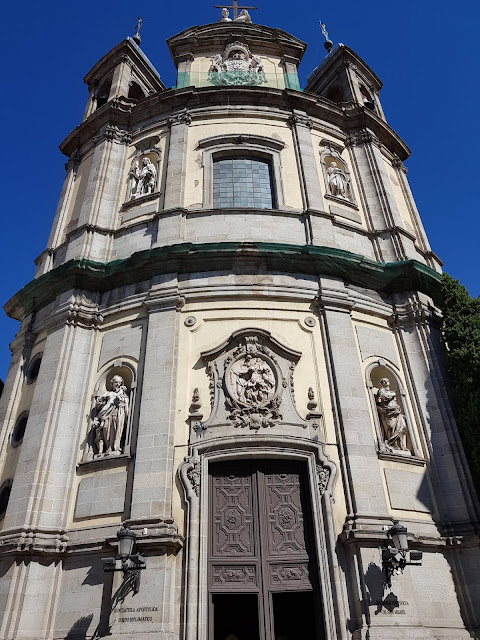





















































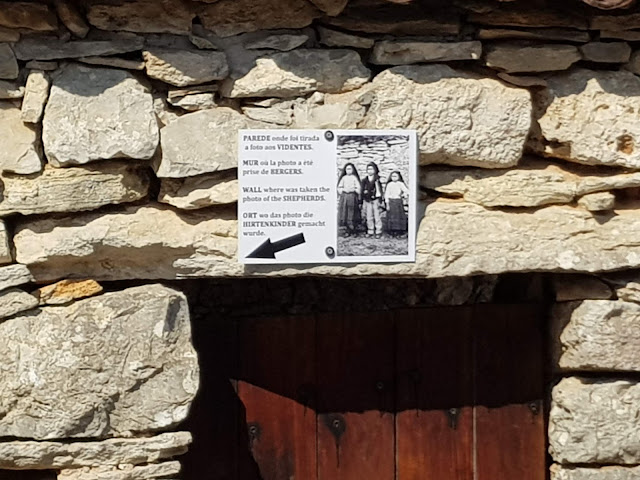












































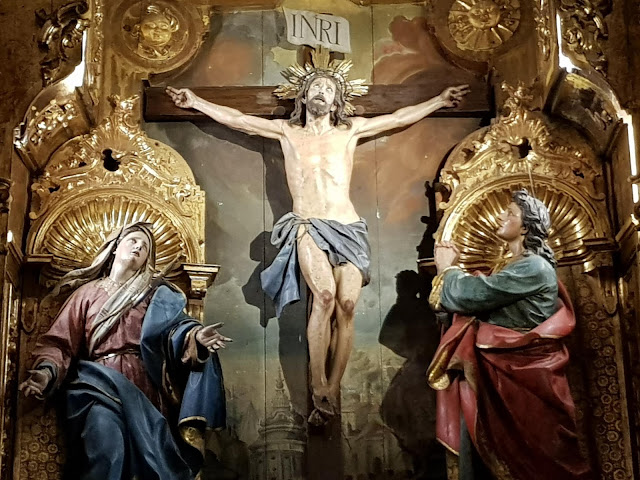











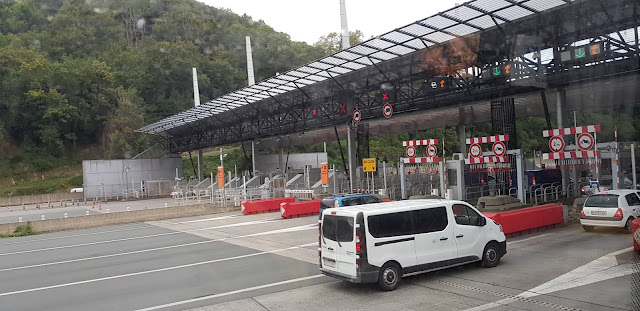


















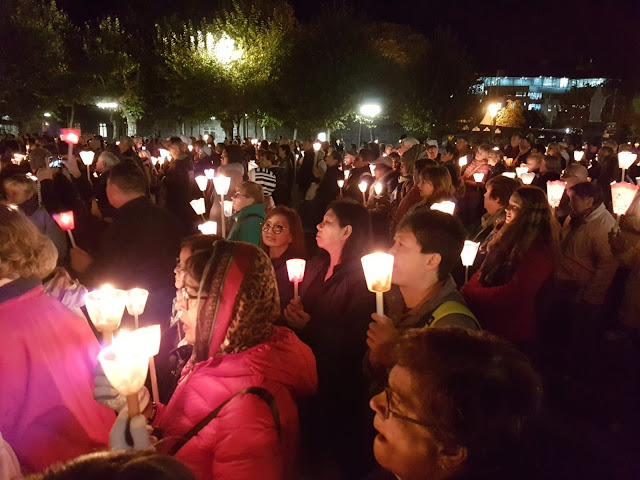

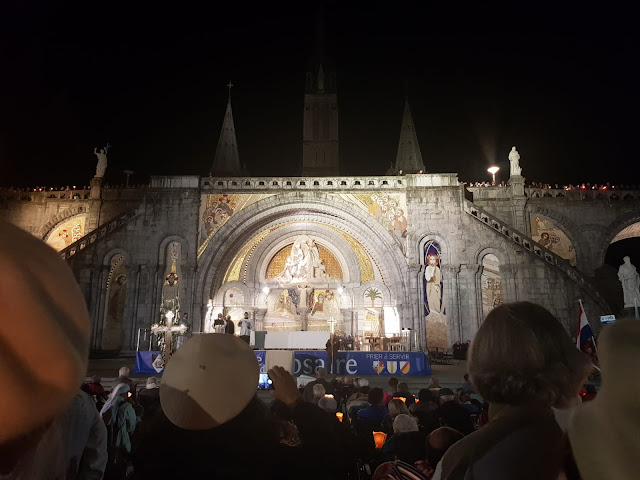







































































No comments:
Post a Comment